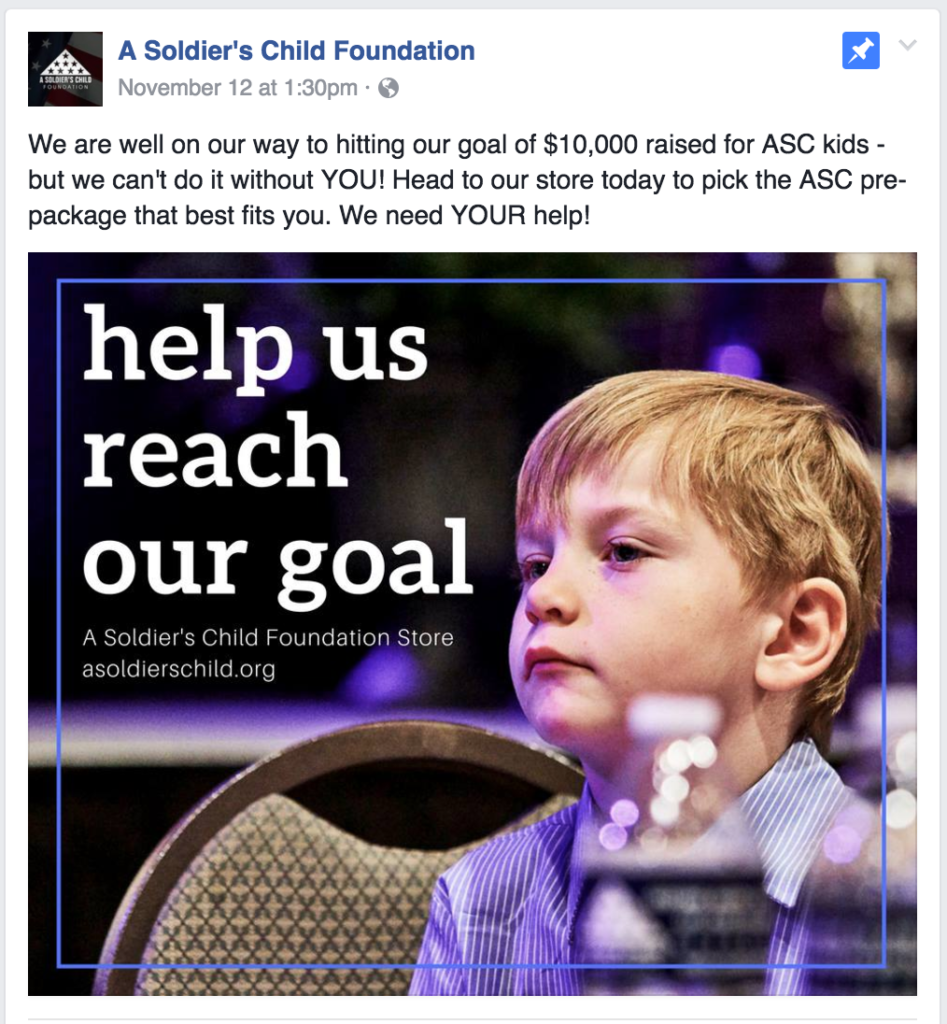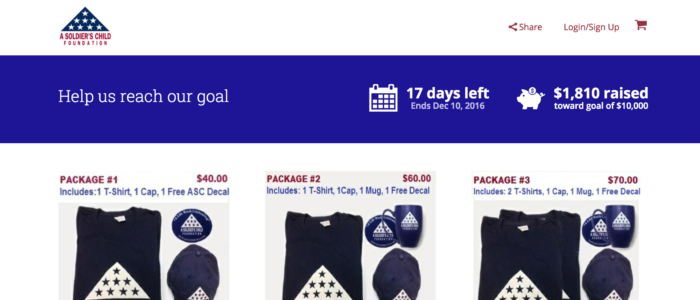We always get a little tingly when we see an InkSoft fundraising store used to support an awesome cause. That’s why when we heard that InkSoft customer Screen Art was finding success with a fundraising store for A Soldier’s Child Foundation, we couldn’t help but share.

A big part of their success has been from winning total buy-in from A Soldier’s Child. Not only has the Foundation posted about the fundraising store on their Facebook page, but they’ve integrated a link to the “ASC Store” into the navigation bar of their website.

Orders are rolling in, so massive kudos to Screen Art.
Now, some of you likely haven’t tried fundraising stores yet. Or maybe you’ve gone for it, but you’re just not getting the results you expected. Here are a few best practices to keep in mind as you pitch and set up your stores.
1) Encourage clients to “own” and promote their store
When you offer a free fundraising store to a client, they’ll usually have one of two reactions. Either they’ll jump on the opportunity and rev their marketing engines, or else they’ll enter into it with an attitude of “why not?”
While “why not” isn’t a bad way to go, that means they’re not likely to support it much. In their mind, you’re the one who came to them, so isn’t it your job to make the sales?
Encourage these clients to promote the store to their supporters. Let them know that a bit of promotion might bring in a bit of support, but the results are largely proportional to their effort.
2) Ask the client to add the store to their website
Even if your client is promoting the store on social media or email, not all of their supporters will want to buy immediately. Having a highly visible link from their homepage will provide an easy purchase path for donors who want to buy later on, but can’t remember where they saw the original promotion.
3) Check in regularly
If a client has a successful experience with your fundraising store””even if they didn’t hit the goal!””make sure to reach back out to them every few months. They’ll likely want to create a new store. If they are unsure about running the same promotion too soon after the first, suggest orienting it toward a special campaign. This, of course, would vary depending on the organization. For example, a foundation for the homeless might run a campaign specifically to support single mothers at risk, while an organization supporting local schools might create a store to raise money for new technology in the classroom.
4) Promote your company on the fundraising store
It’s easy to add a simple line to the fundraising store that says “Need to raise money for group, club or team? [Your Print Shop] offers free online fundraising stores. Contact us to learn more.” Many people who support fundraisers have fundraising needs themselves. Just make sure it’s clear with your client that this line will be in their shop””even though the fundraising store is free to them, it can create a negative impression if they aren’t expecting it.
Want to see a fundraising store in action? Check out our demo fundraising store.


